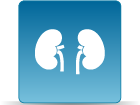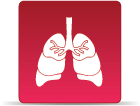Cadmium
CASRN 7440-43-9 | DTXSID1023940
- IRIS Summary (PDF) (13 pp, 118 K)
On this page:
Noncancer Assessment
Reference Dose for Oral Exposure (RfD) (PDF) (13 pp, 118 K) Last Updated: 10/01/1989
| System | RfD (mg/kg-day) | Basis | PoD | Composite UF | Confidence |
|---|---|---|---|---|---|
| Urinary |
5 x 10 -4
(water) |
Significant proteinuria |
NOAEL
:
5
x 10-3
mg/kg-day |
10 | High |
| Urinary |
1 x 10 -3
(food) |
Significant proteinuria |
NOAEL
:
1
x 10-2
mg/kg-day |
10 | High |
Reference Concentration for Inhalation Exposure (RfC) (PDF) (13 pp, 118 K)
Not assessed under the IRIS Program.
Cancer Assessment
Weight of Evidence for Cancer (PDF)
(13 pp, 118 K)
Last Updated: 03/31/1987
| WOE Characterization | Framework for WOE Characterization |
|---|---|
| B1 (Probable human carcinogen - based on limited evidence of carcinogenicity in humans) | Guidelines for Carcinogen Risk Assessment (U.S. EPA, 1986) |
- Limited evidence from occupational epidemiologic studies of cadmium is consistent across investigators and study populations. There is sufficient evidence of carcinogenicity in rats and mice by inhalation and intramuscular and subcutaneous injection. Seven studies in rats and mice wherein cadmium salts (acetate, sulfate, chloride) were administered orally have shown no evidence of carcinogenic response.
- This may be a synopsis of the full weight-of-evidence narrative.
Quantitative Estimate of Carcinogenic Risk from Oral Exposure (PDF) (13 pp, 118 K)
Not Assessed under the IRIS Program.
Quantitative Estimate of Carcinogenic Risk from Inhalation Exposure (PDF) (13 pp, 118 K)
Inhalation Unit Risk:
1.8
x 10-3
per µg/m3
Extrapolation Method: Two stage; only first affected by exposure; extra risk
Tumor site(s): Respiratory
Tumor type(s): Lung, trachea, bronchus cancer deaths (Thun et al., 1985)
Chemical Documents
Other EPA Information
- Human Health Benchmarks for Pesticides (HHBP). This database provides human health benchmarks for pesticides that may be present in drinking water.
- Office of Pesticide Programs Pesticide Chemical Search. This database provides links to health effects information and registration status for pesticides.
- Chemistry Dashboard. This database provides information on chemical structures, experimental and predicted physicochemical, and toxicity data.
Related Links
Critical Effects
Tumor Sites
Chemical Structure

Synonyms
- C.I. 77180
- Cadmium
- Kadmium
- 7440-43-9


